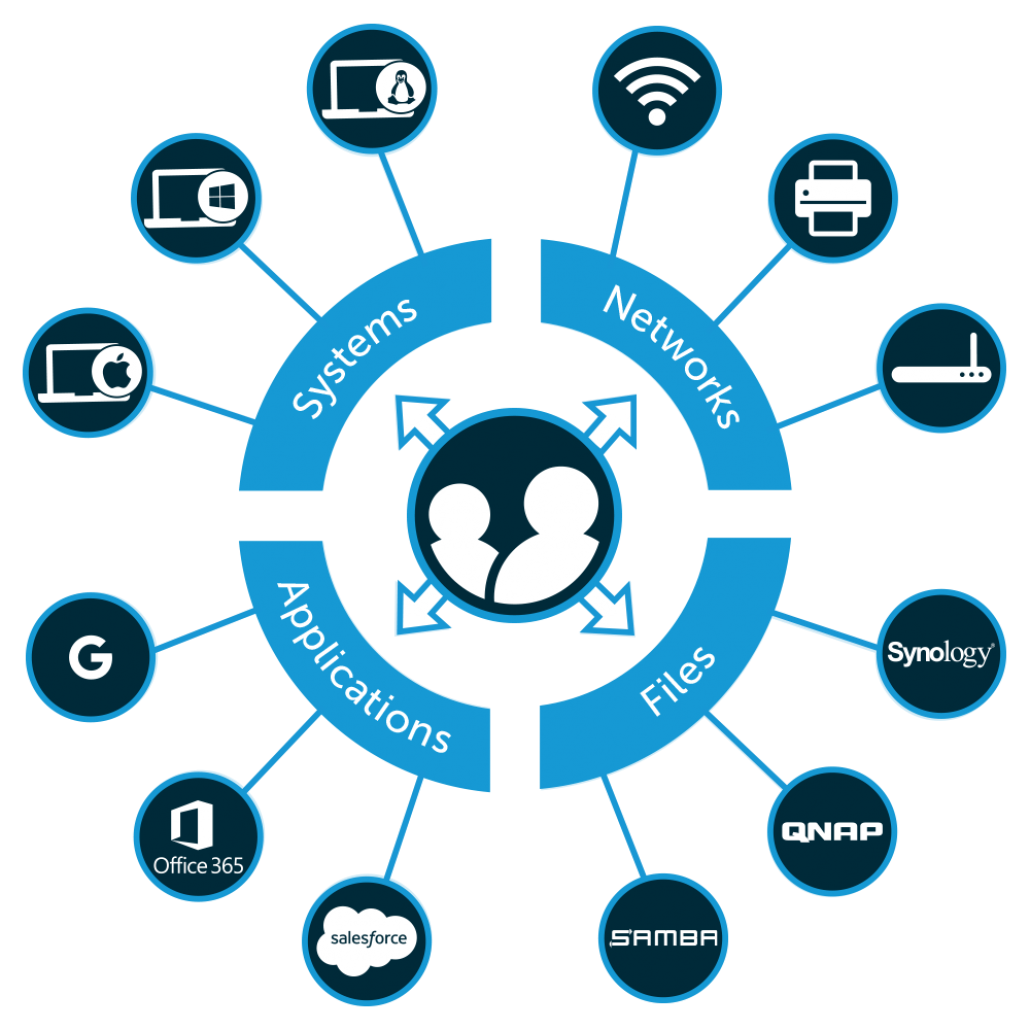A Watershed Moment for Cloud-Forward MSPs
Introduction
No one has to keep a finger on the pulse of the changing IT landscape quite like Managed Service Providers (MSPs). By way of managing dozens of client companies in a variety of industries, each with their own evolving needs, admins working for MSPs are IT experts by trade. In order to effectively manage thousands of users across dozens of organizations, they simply have to be masters of their craft. Based out of London, Priority One has been supplying comprehensive, 24/7 IT support for small-to-medium-sized companies for over a decade. As the number of clients continued to grow, Jon Abbott, Priority One’s Managing Director, needed to find a scalable, platform agnostic, cloud-based solution for supporting clients’ directory needs in mixed-platform environments.
- Organization: Priority One
- Size: 35 Employees, 50 Client Organizations
- Location: HQ in London, UK with smaller office in Manchester
- Problem: Priority One faced a challenge in adapting their business to the rapidly changing IT space and incorporating cloud offerings without losing margin.
- Goal: Priority One is committed to building a full-cloud offering that is both secure and scalable for their business and clients, including the core directory.

Managing Director
Background
For MSPs, efficient time management is crucial. These lean, tight-knit organizations typically operate at a very high level of efficiency and must be ready to respond to a daunting spectrum of client requests at a moment’s notice.
“We see ourselves as a 24/7 appliance IT department. From their service desk to their planning, from their risk assessment road maps to their security, whatever our clients need from an IT perspective—we deliver,” Abbott explained. “There’s about 35 of us in the company, and the majority of us are engineers. We are very strong in finance, medical, and media industries, and we support businesses anywhere from 10 to 300 employees.”
As the traditional on-prem IT infrastructure model continues to shift to the cloud, MSPs like Priority One are seeing the need for centralized access to cloud-based applications and disparate resources spread from client to client.
“Going back just eight years, everything was pretty much on-prem except email. When we looked at that space to see what our clients were using, we didn’t feel confident in products such as GMail and Office 365™ back then—they just weren’t up to scratch,” Abbott said. “But over time, I’d say in the last four years, the IT landscape has been steadily moving over to the cloud.”
Managing IT operations for 50 organizations, each with their own combination of platforms, resources, applications, and offices, requires considerable time and product expertise. Minimizing friction for users on the front end directly correlates to maximizing time for Abbott and his team on the back end. And, while locality has been a mainstay in the past, MSPs are now fully realizing the benefits of managing clients remotely with the cloud.
“The main objective that we’re striving for is for a user to be able to open their laptop, connect to all of their applications in a fast and efficient way, without having to jump through any hoops. That was the goal we were trying to achieve for all of our clients.” Abbott said.
“So we don’t want to have VPNs, and we don’t want to have network breakdowns. I’ve been in IT for nearly 20 years and as an infrastructure person, that’s what you’re always trying to deliver.”

The Challenge
While moving all of their clients to the cloud became a clear objective, deciding exactly how to achieve it proved a bit more challenging. Whatever option they chose, it would need to work for Priority One clients that were currently reliant on Microsoft® Active Directory®. As the dominant centerpiece of most IT organizations for the past 20 years, the legacy, on-prem Microsoft directory solution had become a thorn in the side of Priority One’s cloud-forward plans for their clients.
“If we’re going to move our clients to the cloud, we want to move to the cloud 100%, without anything left onsite apart from the desktops and the networking equipment,” Abbott explained. “Moving files to the cloud was pretty easy, email was a no brainer—just Google or 365—but the sticking point was Active Directory and what we were going to do with that element.”
The solution needed to meet the highest standards for cloud security, and it also needed to work seamlessly across Windows, Mac, and Linux, as well as a variety of IaaS and SaaS platforms.
“If you don’t manage the platforms properly, either they’re going to get hacked, or it’s going to be remarkably inefficient. It’s just not going to work if you don’t piece together the right applications and make them actually seamless.”
Beyond needing an efficient, cross-platform solution, Priority One was unsure how moving to the cloud would affect their revenue, and in turn, their bottom line as an MSP. Migrating all of their clients to the cloud would require more than just changing their offerings; Priority One would need to adjust their business model as well.
“There was a concern we were going to be losing a lot of revenue if we just moved everything to the cloud, because everything would be done by the providers and we wouldn’t have a job to do. This is a factor we will always investigate before moving forward with a new product.”
With an inbox of client requests and a suitcase of business concerns, Abbott began searching for the best way to migrate Priority One clients to the cloud. Soon after, he came across JumpCloud Directory-as-a-Service.

The Solution
JumpCloud® Directory-as-a-Service® satisfied Priority One’s need to remotely support heterogeneous fleets of Mac, Windows, and Linux systems. What’s more, Priority One was able to cut down considerably on the time spent onboarding and offboarding employees for their clients.
“When you have Windows and Macs in your environment and you want to move them to the cloud, there isn’t a better choice than JumpCloud.”
Abbott continued, “The speed that you can roll out JumpCloud, globally, with very little disruption, for hundreds of people, results in huge efficiency gains. Whereas if you’re using on-prem technology, you just wouldn’t be able to do that.”
In regards to Windows management specifically, JumpCloud’s Powershell Module enabled Priority One to save a great deal of time with its ability to execute commands and enforce security measures remotely.
“JumpCloud’s ability to send out Powershell commands is just absolutely brilliant. We’ve saved so much time with that alone,” Abbott explained. “Windows 10 by default doesn’t automatically lock your screen, which is really strange as Windows 10 is all about security. But with JumpCloud, we were able to push a policy to fix that to all of the machines instantly, and we know they’ve all got it because the command results came back and told us.”
Priority One was able to take the time and money they saved onboarding and managing systems to find more headroom for scaling their business. Schedules freed up, allowing admins to spend more time focusing on matters they normally wouldn’t have had the bandwidth for.
“It’s about doing more with less, which is a term that I don’t love, but it is true. With JumpCloud, you can start serving more clients for the same costs as before. What it was costing you to manage 30 users, you can now accomplish for a hundred, and that’s the benefit,” Abbott said. “With this efficiency gain, JumpCloud has enabled us to focus on other things—such as security as a service, and doing more project work.”

The Result
Remember those revenue concerns, and the uncertainty around how this new cloud-based, cross-platform approach would affect the amount of work available for their administrators? Well, with JumpCloud supporting their ability to grow, Priority One was able to put those worries to rest.
“As more and more things started to move to the cloud, it became very apparent that actually, we’re going to have more work to do. It’s just done differently as we can now centrally manage all of these different platforms.”
As it turns out, security, savings, and operations were all improved by moving Priority One’s clients to the cloud.
“Now, everything on the cloud is much more cost effective. In fact, our numbers indicate that it’s really only been the last two years where it’s actually better to have everything in the cloud—that’s from the standpoint of cost, performance, and security.”
With pressure building behind compliance audits, like the recently released GDPR EU regulation, Priority One remains confident that everything they’re doing through JumpCloud is fully audited and traceable.
“I’ve always liked the analogy of creating your kitchen in a restaurant where it’s just a plain glass window and you can just see the cooks working away,” Abbott said. “I like that analogy for what it should be like for our clients seeing us as an MSP. They can see everything we’re doing—completely transparent—and they can see we’re doing a great job.”

Looking Ahead
Without a doubt, the fate of MSPs is directly tied with the IT industry at large, and Abbott sees the importance of cloud security, compliance, and automation only continuing their progression up and to the right.
“The future is all about automation and auditing. We need to move away from the break/fix MSP business model to a model that revolves around serving the client and quickly solving their problems.”
Abbott explained. “I think automation is the key to that. Then, from a compliance standpoint, we must have remarkable audit trails of everything that’s happened.”
MSPs like Priority One are seeing a new opportunity to scale with JumpCloud and grow their business. They’re taking their clients and their product offerings to the cloud and not looking back to the on-prem, Windows-centric restrictions of yesteryear.
“Today, I don’t think there is anything that can’t be moved to the cloud; I definitely didn’t have that view two years ago,” Abbott concluded. “But now, I think the cloud is ready.”

More Info
Want to learn more about JumpCloud? Try a guided simulation or demo!
Ready to get started as a partner? Apply here.
Still need a bit more info? Get an overview at our Partners page.
